

We may earn revenue from the products available on this page and participate in affiliate programs. Learn More ›
Although tropical indoor plants won’t tolerate northern winters outdoors, they can enliven the coldest months indoors with luxuriant leaves and bright blooms. If you are bored with tropical foliage plants, try some of the blooming types instead.
When growing tropical houseplants, keep in mind that woody species often drop many of their leaves after being brought into the house. That is how they cope with the lower light levels; it doesn’t mean the exotic plants are expiring, just adjusting their expectations. If your windows don’t provide as much sunlight as some tropical types prefer, consider placing them under a grow light.
RELATED: Master Indoor Bird of Paradise Plant Care and Your Green Thumb Will Soar
1. Amaryllis (Hippeastrum spp.)
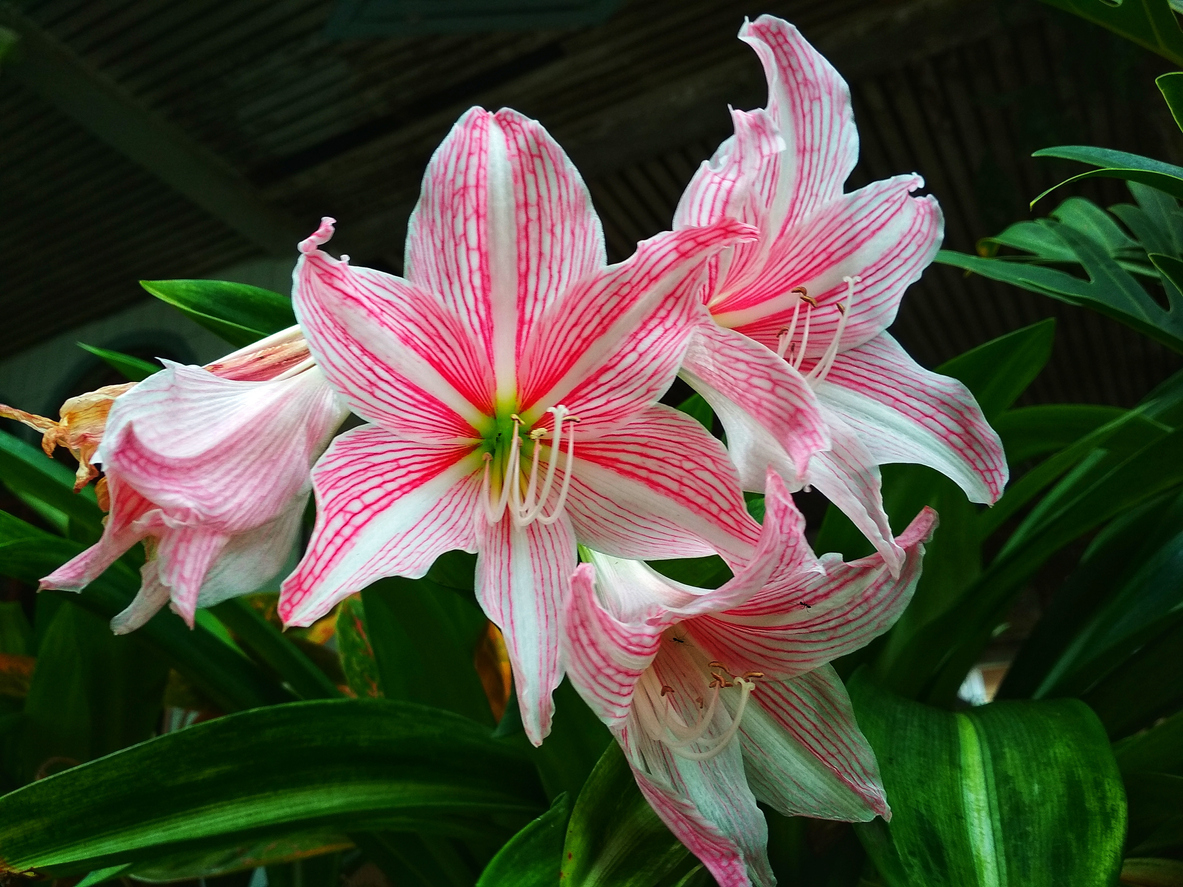
Everybody is amorous of amaryllis, one of the most common tropical houseplants, for good reason. What other species can produce large lily-like blooms indoors in the dead of winter? Keep this South American native growing throughout spring and summer in full sun before you can cut back on watering it to allow it to drop into dormancy. After a couple of months, begin watering it again to bring it back to life in time for the holidays. It should flower 6 to 8 weeks after its sprouting. Keep in mind that evergreen commercial types don’t require a dormant period.
2. Cape Primrose (Streptocarpus spp.)
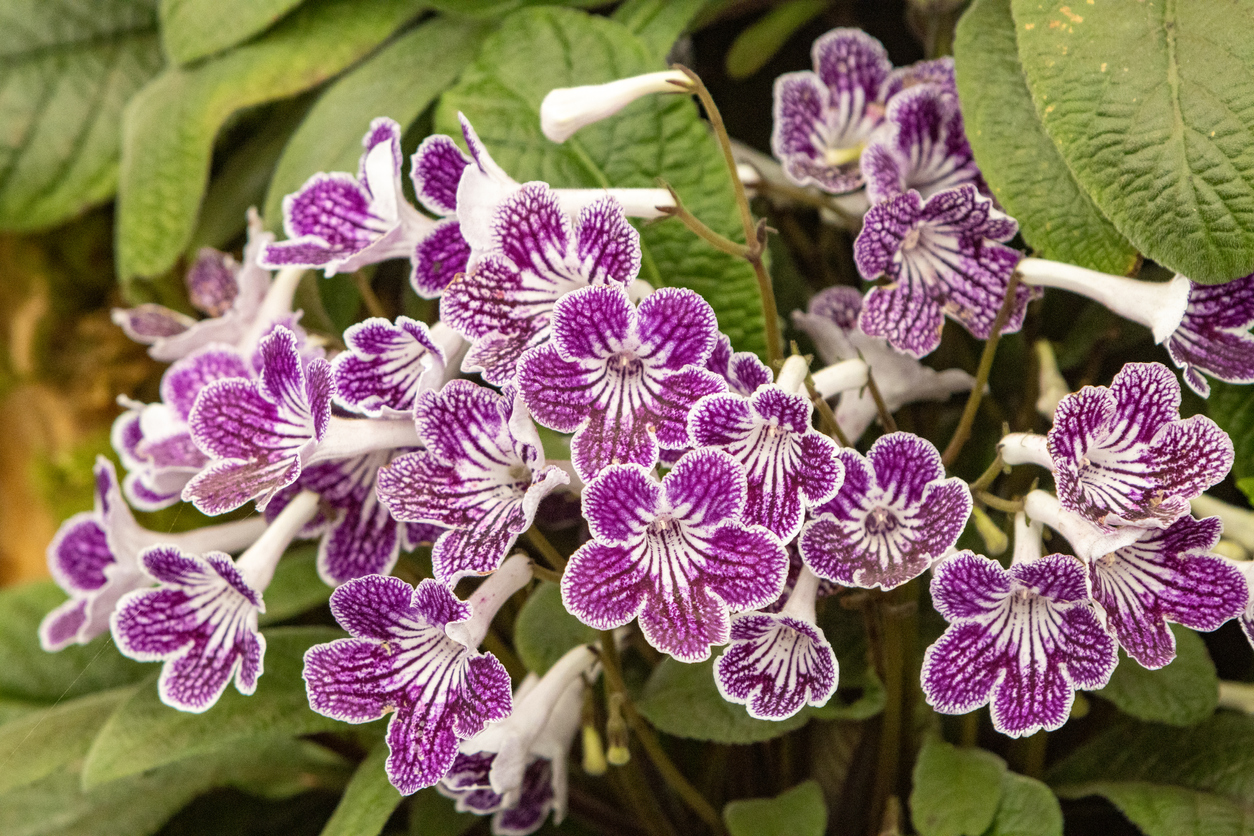
Despite its genus name sounding like a disease, this is one of the best indoor tropical plants for low light. Although the typical fuzzy-leaved African violet is included in this family, some Streptocarpus hybrids have long quilted-looking leaves. The plants seldom surpass a foot in height and can produce trumpet-shaped blooms throughout the year. Give the plant only partial sun or bright, indirect light and cool conditions (between 60 and 70 degrees Fahrenheit) for the best results. As with most gesneriads, it also performs well under grow lights. Water it with lukewarm water whenever the surface of its soil is dry.
3. Clivia (Clivia spp.)
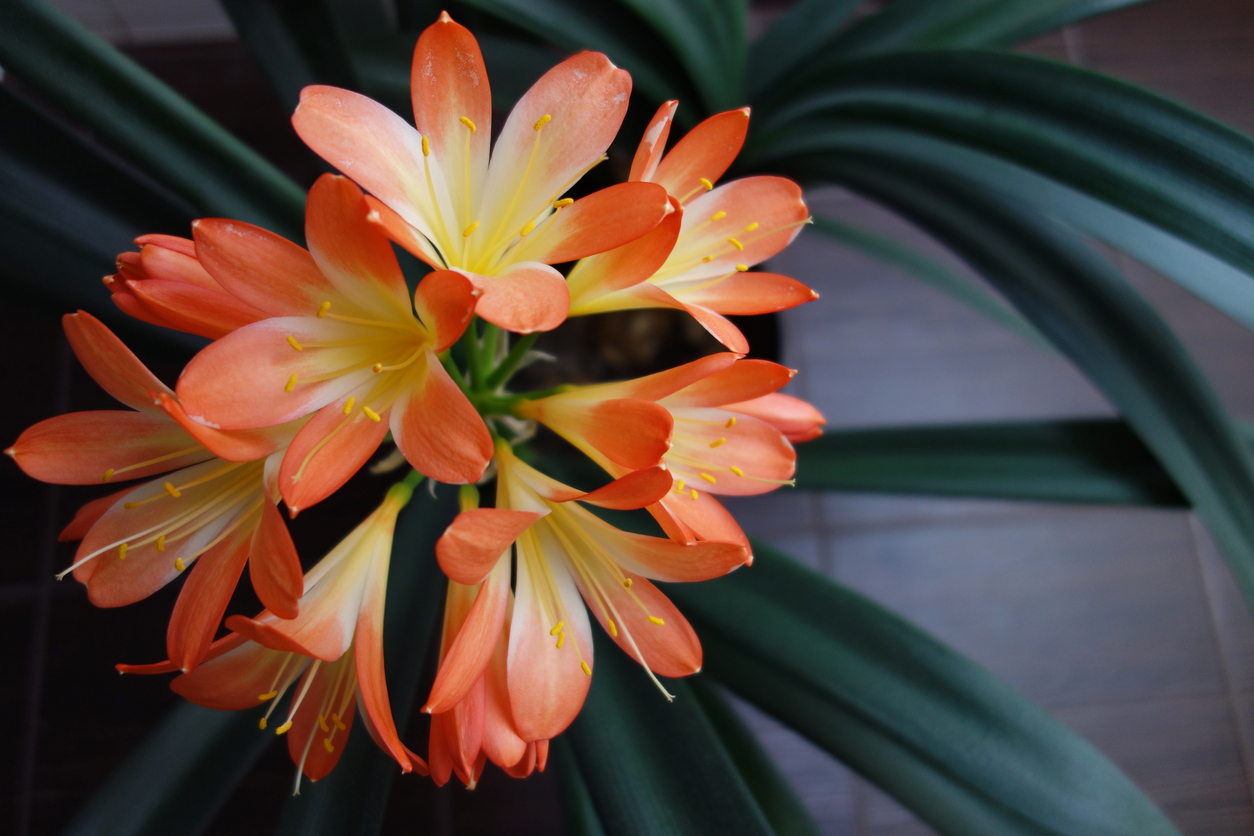
Blooming in late winter or early spring, these African species have large strappy leaves similar to those of amaryllis, but it produces clusters of 10 to 20 blooms at a time—most in warm colors such as orange or red. Also known as bush lily or fire lily, it should be left outdoors until just before frost and then kept on the dry side in a location with temperatures below 60 degrees Fahrenheit. Place it near an east-facing window until it flowers, after which you can move it to a warmer position and water it more frequently.
4. Crown of Thorns (Euphorbia milii)
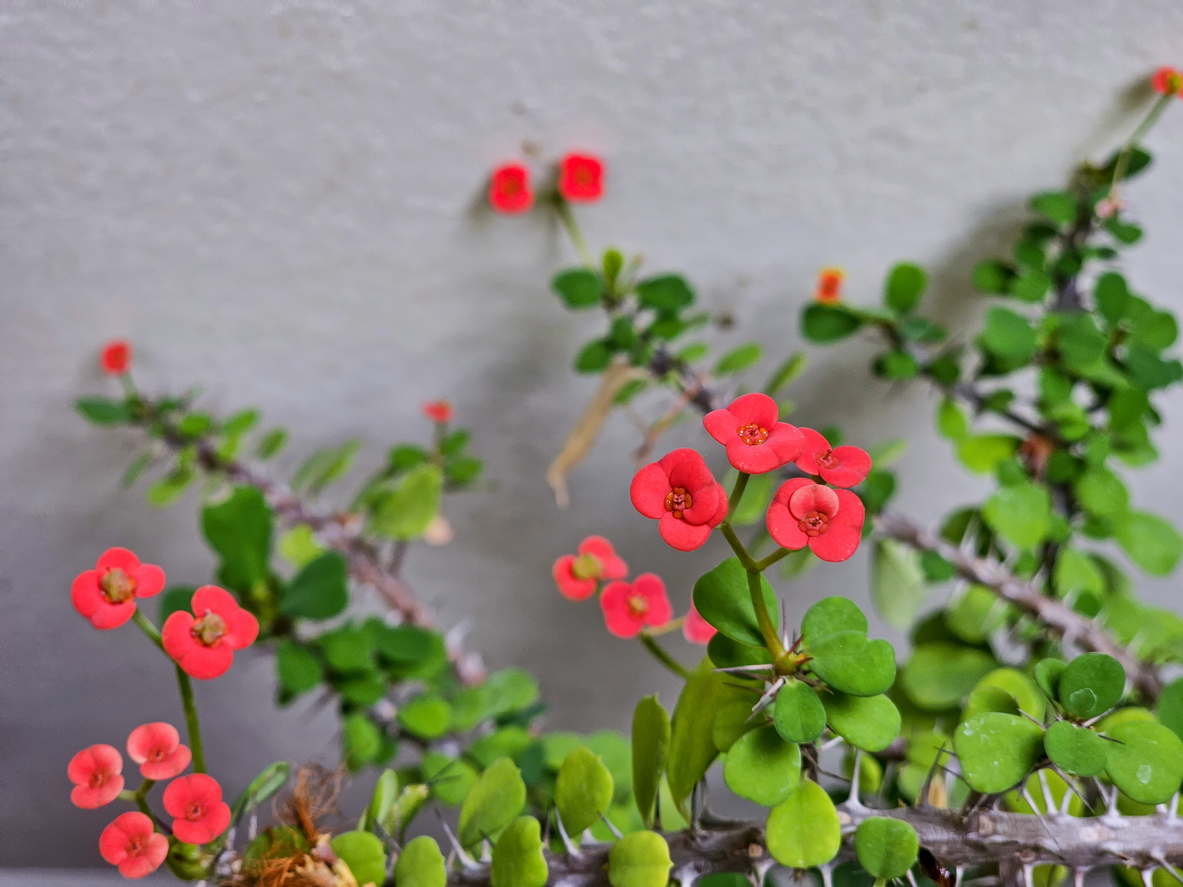
The spiky but not picky crown of thorns plant that hails from Madagascar can thrive under the low-humidity conditions of the average home in winter, producing colorful “blooms,” which are actually bracts, for months on end. The easy-to-grow plant needs at least 3 to 4 hours of sunlight per day, preferably more. Allow its soil to dry out a bit beneath the surface before you water it again. If your plant isn’t blooming, give it long nights (at least 13 hours of total darkness) to encourage it to do so. Just note that it can have sharp spikes, and its white sap can irritate skin and eyes.
RELATED: 20 Huge Houseplants That Make a Statement
5. Cyclamen (Cyclamen persicum)
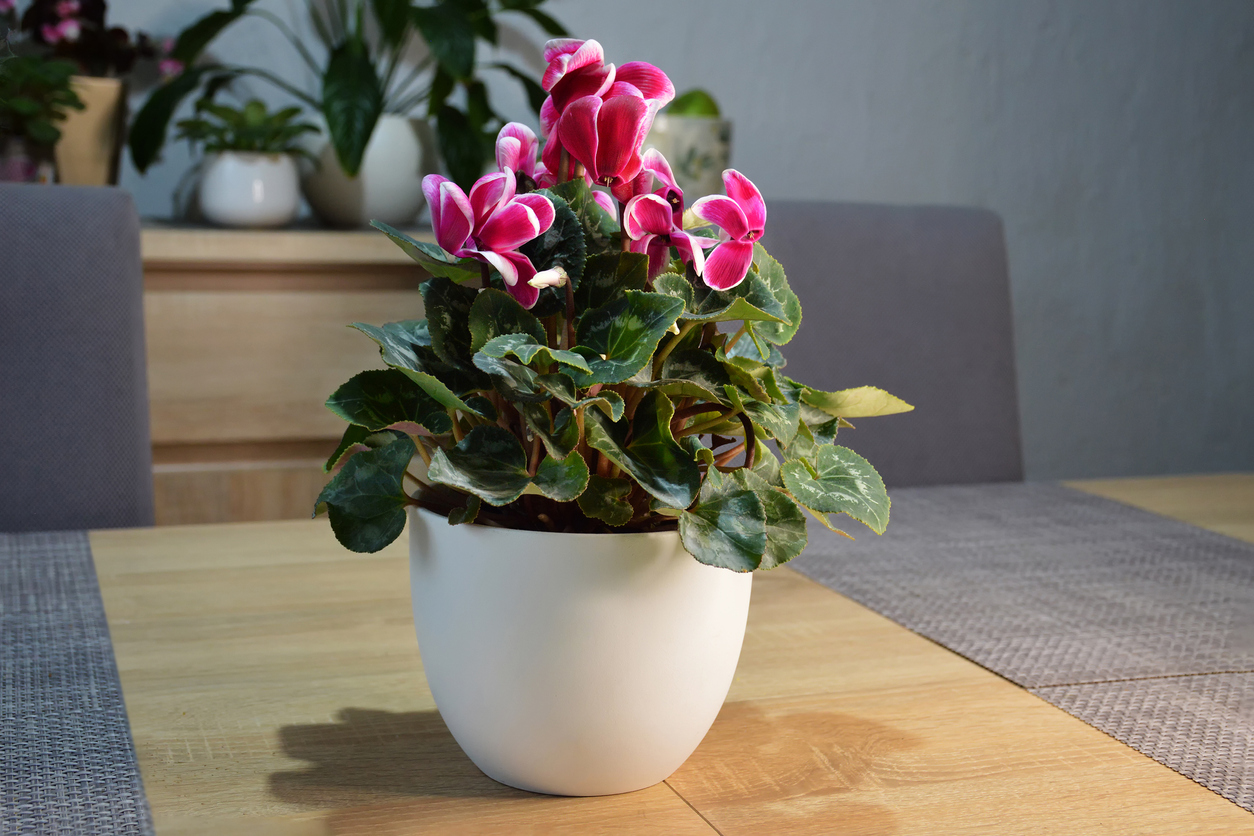
Persian cyclamen blooms in the middle of winter, its heart-shaped leaves often exhibiting intricate mottled patterns while its petals resemble upswept wings. Place it in an east-facing window where it receives a couple of hours of sunlight per day, and water it from the side to avoid getting its corm (swollen underground main stem) wet. Once it has finished flowering, allow it to dry back to the corm in late spring and keep it in a cool location for most of the summer. When it begins to sprout again in late summer, move it out into the light again and resume watering it.
6. Flowering Maple (Abutilon spp.)
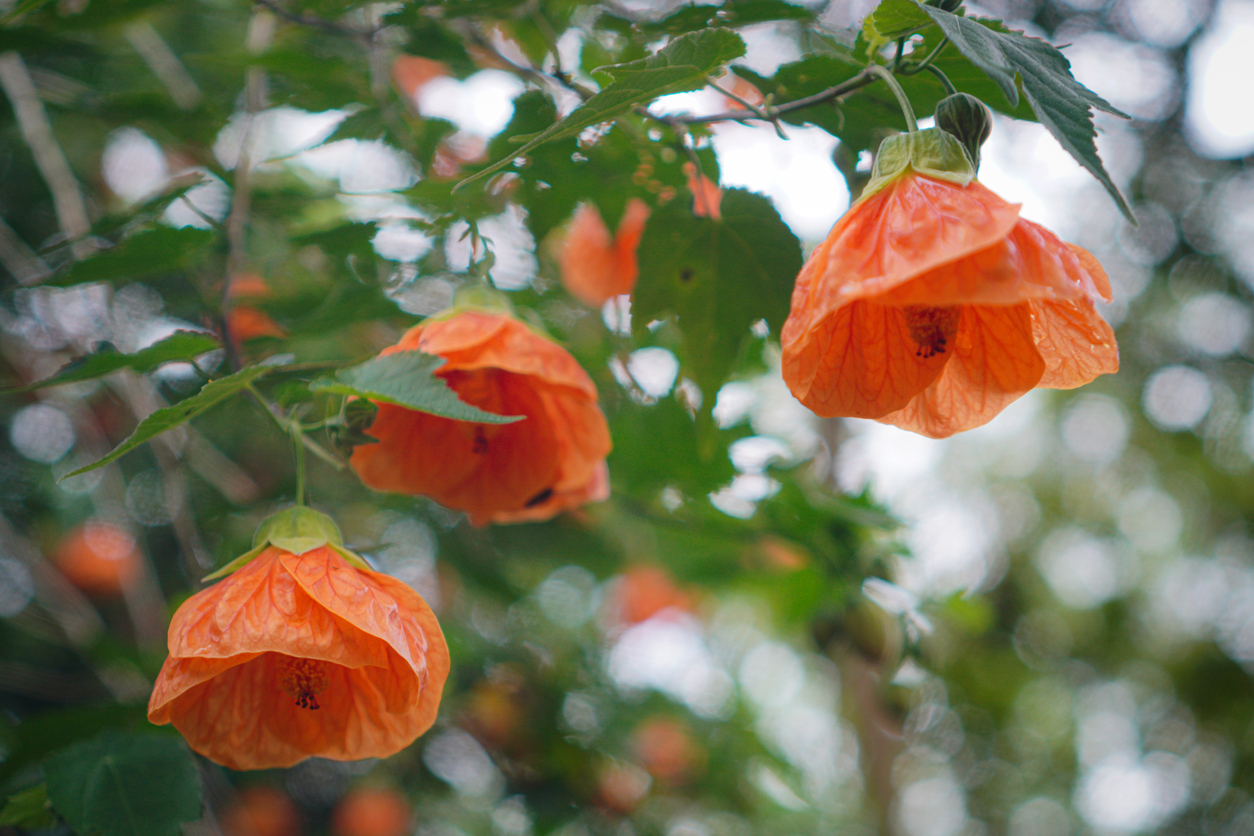
Although named after a more “sappy” species due to the similarity of their five-lobed leaves, Abutilon isn’t actually a maple and makes much more impressive blooms than the tree does. As a houseplant, it can produce dangling bell-shaped flowers in most months of the year if it gets full or partial light and its soil is allowed to dry out to about 1 inch down between waterings. Barbara Pleasant, author of The Complete Houseplant Survival Manual, suggests that you also cut the plant back by about one-third in spring.
7. Geranium (Pelargonium x hortorum)
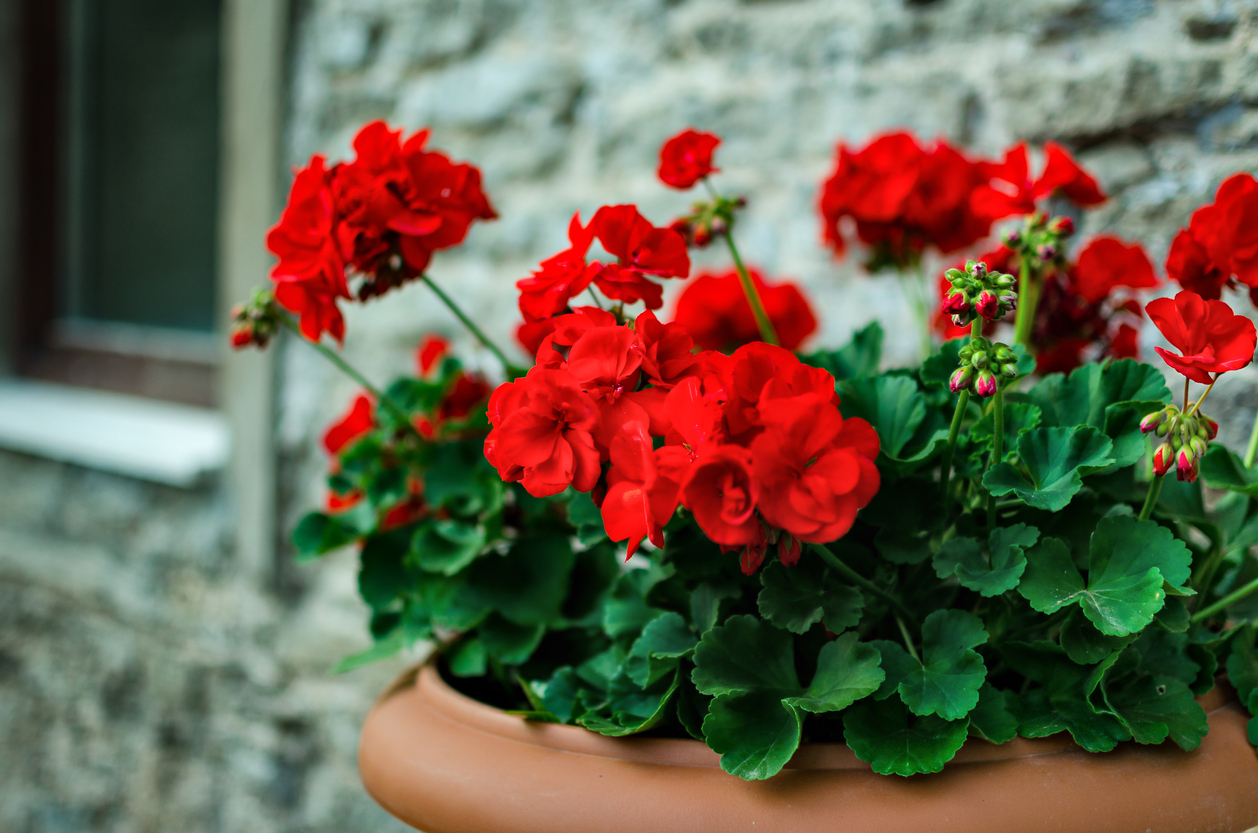
One of the most well-known types of indoor tropical plants, the annual geranium with its roundish leaves and heads of lobed blooms is the quintessential flowering houseplant for good reason. If moved indoors to a sunny windowsill in autumn and pruned back a bit, it can resume flowering within a month or so. A houseplant originating in the wilds of Africa, the geranium prefers somewhat arid conditions, so be careful not to overdo the moisture. Allow its soil to dry out about an inch below the surface before watering it again.
8. Wax Plant (Hoya spp.)
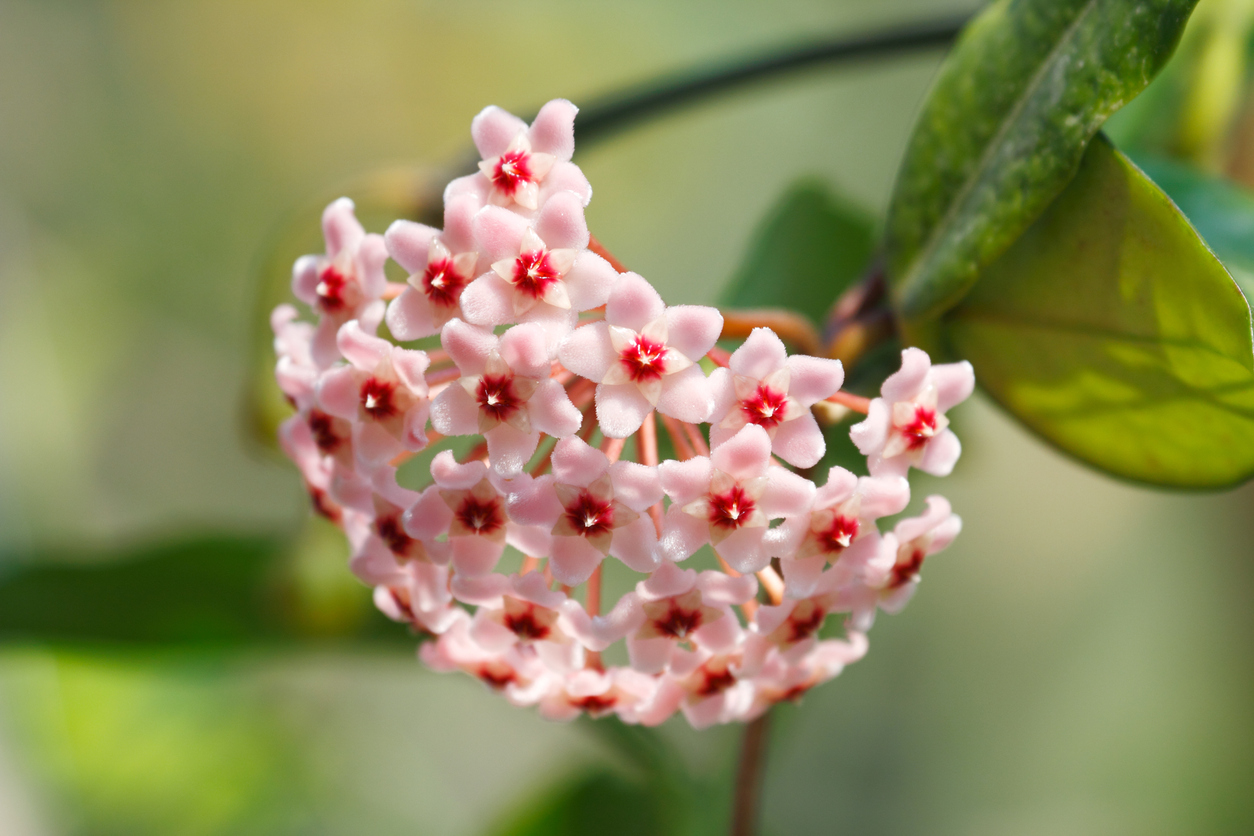
A climbing or dangling plant with succulent foliage and exotic balls of waxy blooms, hoya prefers only partial sun—preferably from an east-facing window—or bright, indirect light. Most hoya species are native to Asia or Australia. Water the plants when the surface of the container soil is dry in summer and allow the soil to dry out more during winter. For the best winter show, choose winter bloomers such as H. calycina or ever-bloomers such as H. krohniana.
9. Lipstick Plant (Aeschynanthus spp.)
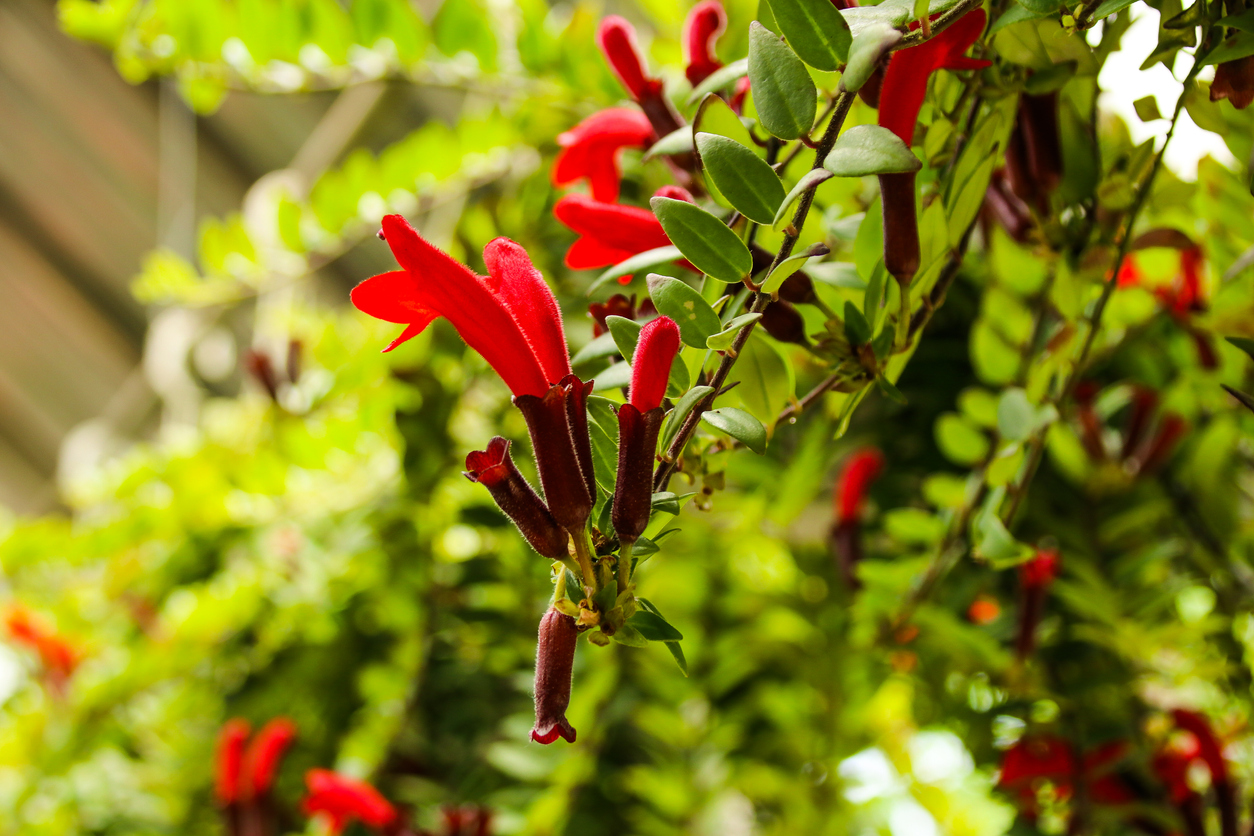
Also called basket plant for its dangling ways, this species produces cascading foliage and tube-like maroon blooms with the “lipstick” emerging as a more brightly colored red flower from the tip of the tube. Lipstick plants can bloom on and off all year, though you might want to choose a cultivar especially touted for winter flowering such as A. obconicus ‘Mona Lisa’. Give it partial sun, with no direct midday rays, and water it when the surface of its soil looks dry.
RELATED: The 22 Best Trees to Grow Indoors
10. Moth Orchid (Phalaenopsis spp.)
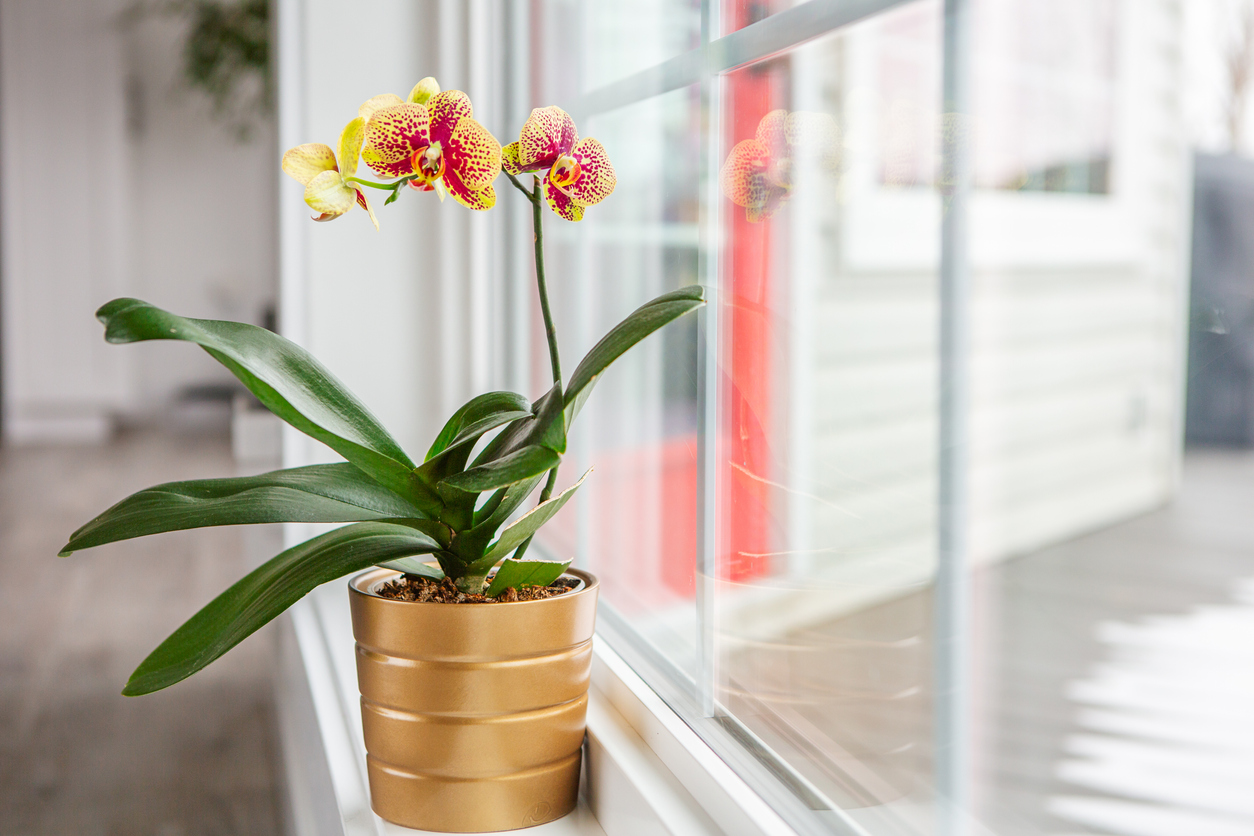
“The easiest orchid to grow in the home,” according to the Missouri Botanical Garden, this winter-blooming type is one of the houseplants that need no soil. It typically grows in a bark or moss medium instead and prefers only partial sun or a grow light. Allow its medium to dry out an inch or so down before you water the plant again and allow the temperature for this orchid to drop into the 60s at night. You might want to leave it outdoors for a month in autumn when nighttime temperatures are in the 50s to spur it into blooming.
11. Passionflower (Passiflora spp.)
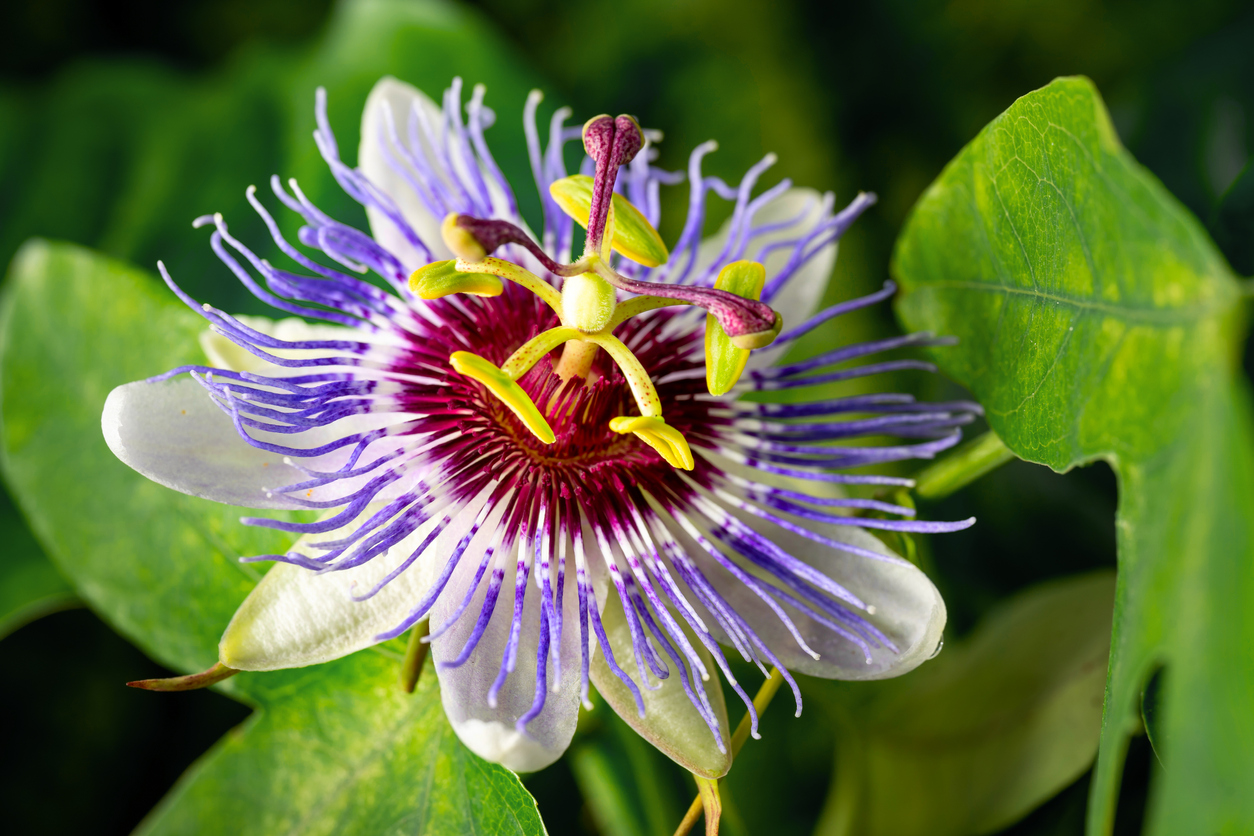
Beloved for its peculiar blooms that have been associated with Good Friday due to their crown and spikes, the climbing lobed-leaved passionflower requires plenty of sun and warmth to bloom. Allow the surface of its soil to dry out before watering it again. If you want your plant to flower during winter, look for winter-blooming types such as P. miniata and P. sidiflora. Otherwise, just keep the plant alive indoors during the dark months so it can bloom outdoors during the brighter ones. Keep in mind that seed-grown specimens reportedly take much longer to flower than those propagated by cuttings.
12. Shrimp Plant (Justicia brandegeana)
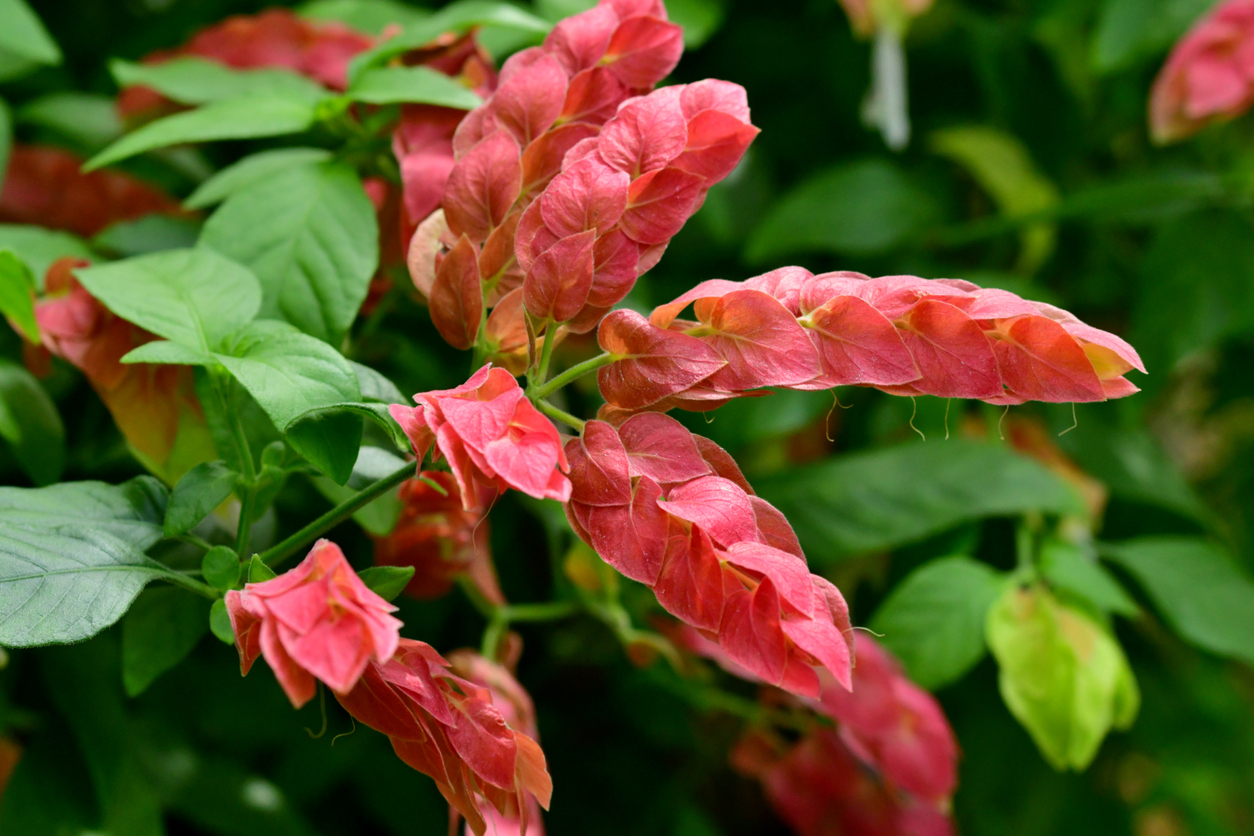
One of the most unusual tropical plants for indoors, this species with its shrimp-like blooms made up of salmon-colored bracts and white flowers is actually one of the easiest to grow, flowering at almost any time of year in which it has enough light. Place it in full or partial sun and water it whenever the surface of its potting mix is dry. Choose Variegata for white-streaked leaves or ‘Fruit Cocktail’ for green bracts with red flowers.
13. Skyflower (Thunbergia grandiflora)
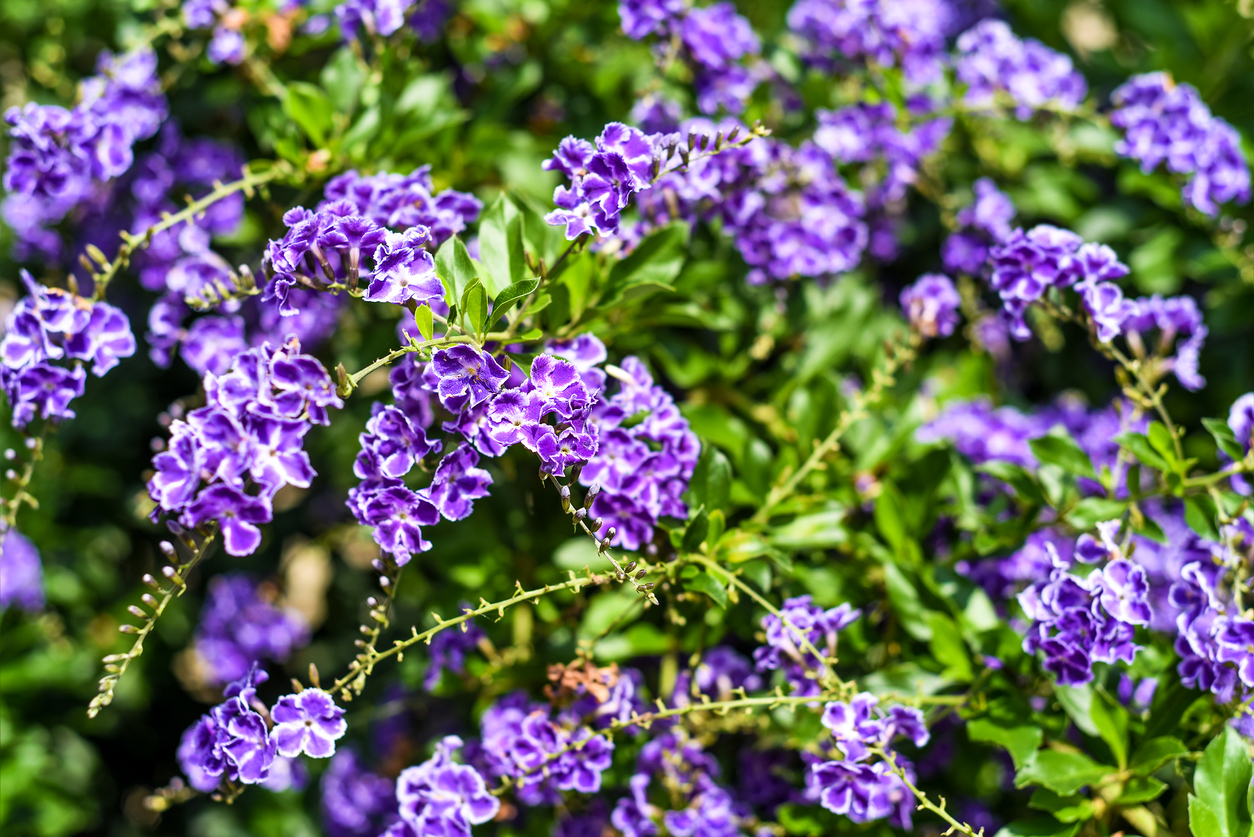
This climbing vine with heart-shaped leaves can make 3-inch sky-blue blooms with yellow centers almost all year in tropical climates. So, it might continue to flower indoors during winter if it receives plenty of sunlight and water when the surface of its soil is dry. However, you will want to keep the plant in a room that remains dark at night, since short day length reportedly is what coaxes it into bloom.
14. Tropical Hibiscus (Hibiscus rosa-sinensis)
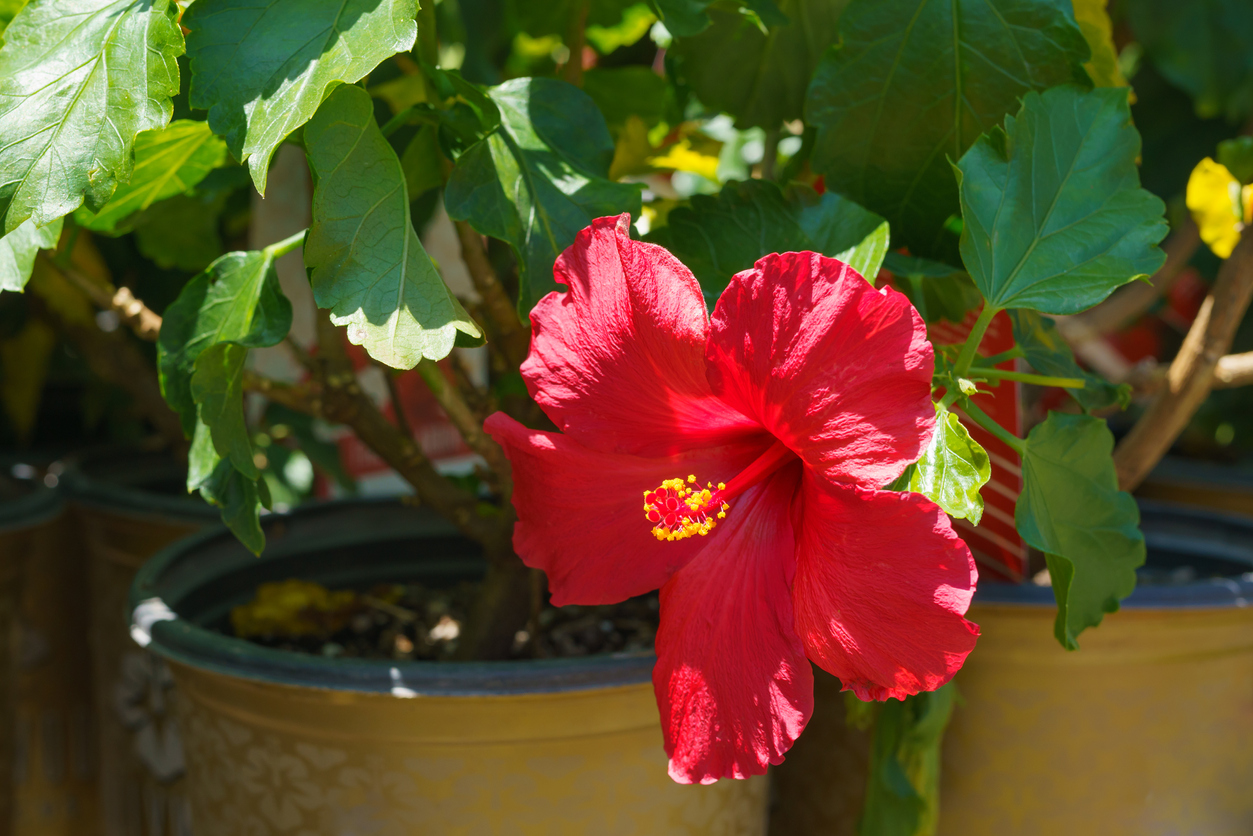
Among the large indoor tropical plants in both height and flower size, tropical hibiscus can continue producing showy blooms up to 8 inches across—single or double according to cultivar—into autumn and winter. However, it will need a position at a sunny south- or west-facing window to do so. Water the plant whenever the surface of its soil is dry. Because hibiscus shrubs make buds on the tips of their shoots, it’s a good idea to avoid pruning this fast-growing houseplant in autumn until you are sure that all of the buds have bloomed.
15. Winter-Blooming Jasmine (Jasminum polyanthum)
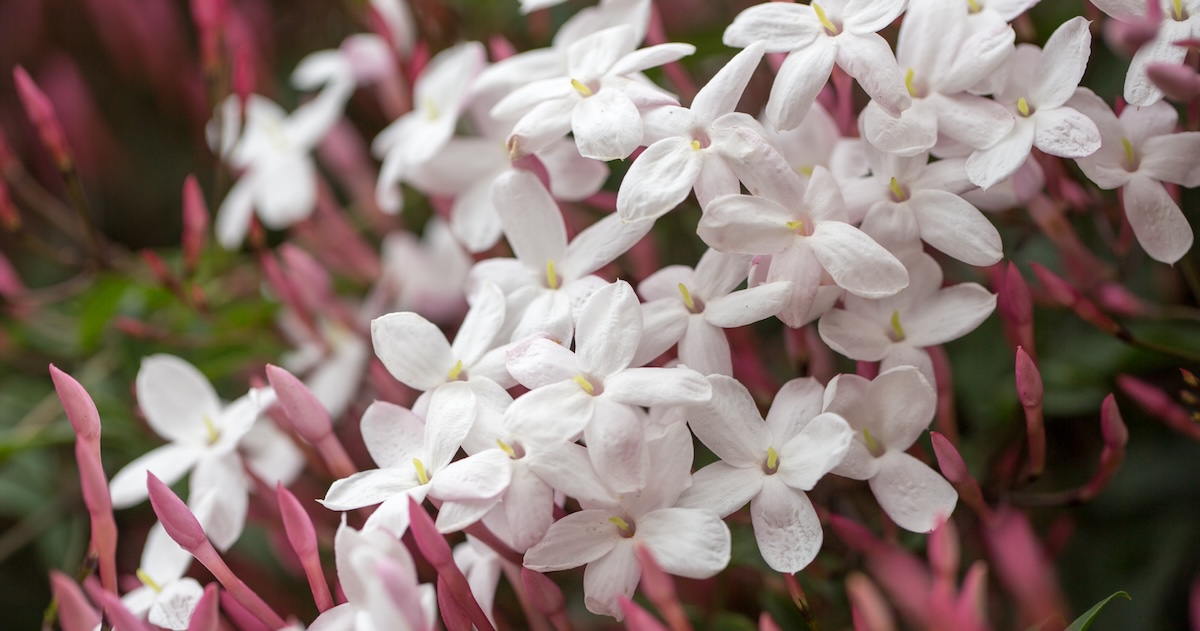
Being a houseplant that thrives in winter, this species can perfume your Valentine’s Day with starry white and scented blooms. To encourage your jasmine to set buds, give it full to partial sun during summer and leave it outdoors into autumn until it has experienced at least 6 weeks of 40- to 60-degree Fahrenheit conditions. Then move it indoors to a similarly bright location. There, the temperature should continue to hover near or below 60 degrees at night, proving indoor tropical plant care doesn’t always call for warm conditions. Water it when the surface of its soil has dried to ½ inch down.
